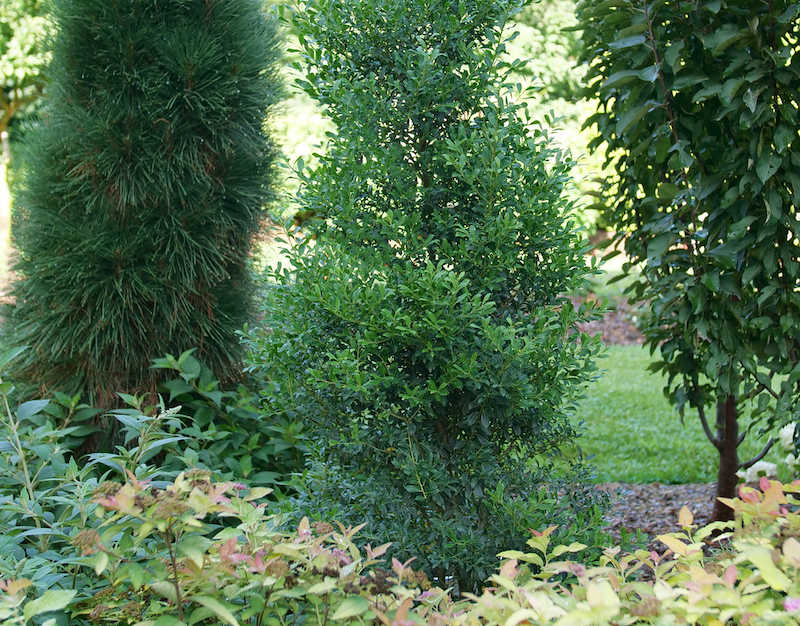Growing Inkberry Holly
Inkberry Holly, scientifically known as Ilex glabra, is an upright evergreen shrub native to the southeast US, which reaches 4-6 ft in height and 3-5 ft in width. White flowers appear in late spring and transform into purple berries in the fall, providing valuable food for birds. Inkberry Holly is cold hardy down to Zone 4. They are wonderful shrubs to use as foundation plantings or lush, evergreen hedging.

Planting Inkberry Holly
Plant Inkberry Holly in a location that receives at least 5-6 hours of sunlight per day. They grow best in full sun but can appreciate a bit of afternoon shade, particularly when grown in warmer climates. Avoid burying the crown or base of this shrub in soil; elevate it slightly higher than soil level when planting to prevent root rot. In addition, be sure to pull any mulch away from the crown to allow for ample air circulation. Plant Inkberry Holly in well-draining soil; if you have heavy clay soil, mix in a bit of compost or pine bark mulch.

Watering Inkberry Holly
Water the root zone deeply to encourage the roots to reach for water; this is especially beneficial during the first year after planting. When you notice the first few inches of soil are dry to the touch, it's time to water again. Once Inkberry Holly becomes established and mature, you can water less frequently, although be mindful to water during extended periods of drought.
Fertilizing Inkberry Holly
Inkberry Holly requires acidic soil, so use a fertilizer that is specifically formulated for acid-loving evergreen shrubs, such as Holly Tone organic slow-release fertilizer or a formula for azaleas and rhododendrons. Apply the feed in early spring and once again in mid-summer to encourage foliar growth.
Pruning Inkberry Holly
Pruning Inkberry Holly can be done selectively to open up the center, allow better air circulation, rejuvenate health, and control the shape. Reach deep into the shrub and cut congested branches to thin it out, or if you see a branch that is dead or crossing, remove it. Finally, prune to shape the shrub, removing up to 1/3 of the branches and working from the center of the shrub out to the edges. Note that Inkberry blooms on old wood, so the best time to prune is just after blooming, otherwise you risk removing next year’s blooms and berries.

Caring For Inkberry Holly in Pots
There are dwarf and compact varieties of Inkberry Holly that make excellent container shrubs. Dwarf varieties are perfect for growing in containers because they require far less pruning to maintain their size and shape. Your container must have ample drainage holes to allow excess water to run out easily, Inkberry Holly can be susceptible to root rot, so pot it in a well-draining potting mixture, and plant the crown of the shrub a few inches higher than the soil level.
Winter Care for Inkberry Holly
Inkberry Holly is evergreen and adds lovely winter interest. Inkberry Holly is cold hardy and is generally resistant to windburn. Browsing deer seem to ignore this shrub, so it's relatively maintenance-free in the winter.
 |
Author Chris Link - Published 03-15-2023 |
